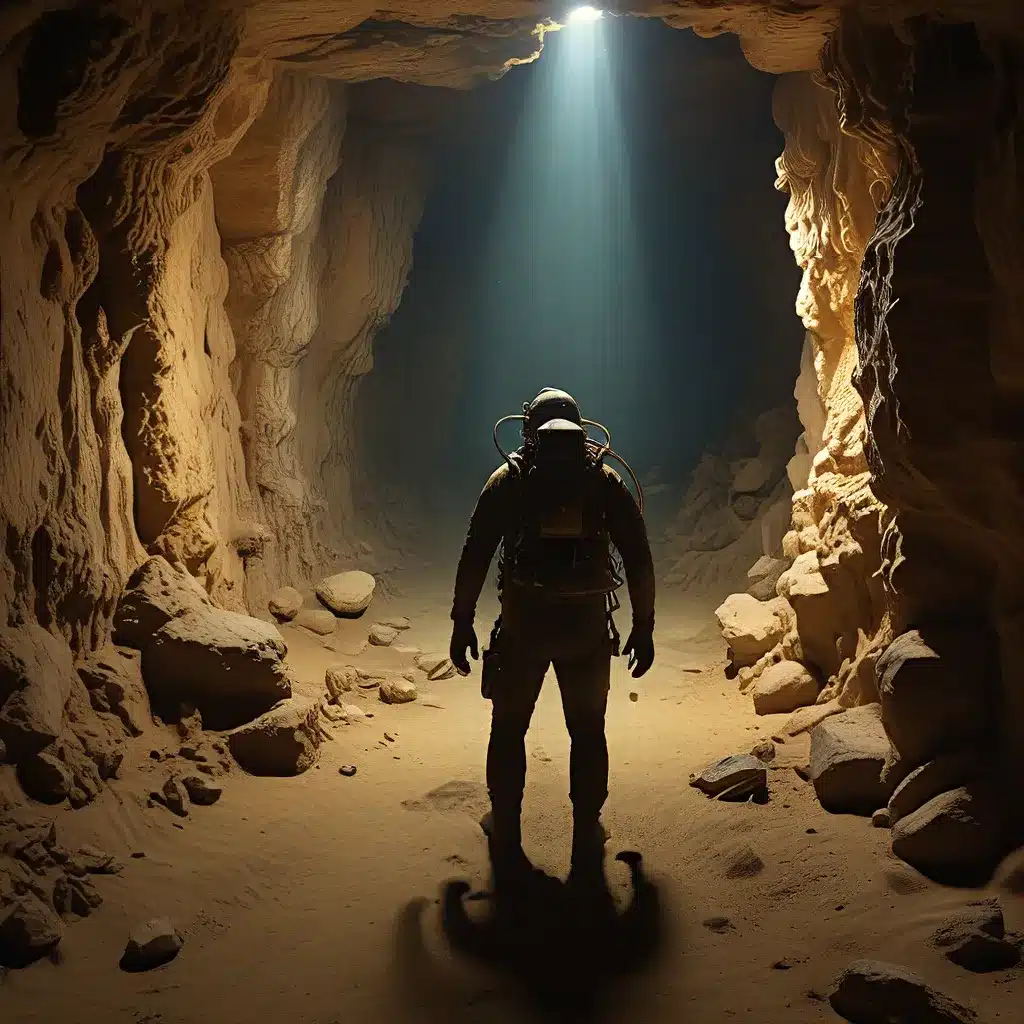
The world of archaeology is a realm of endless fascination, where the secrets of bygone eras lie buried beneath our feet, waiting to be unearthed. In recent years, the rise of innovative remote sensing technologies has revolutionized the way we explore and uncover these hidden treasures, shedding light on the mysteries of ancient civilizations and shattering our preconceptions about the past.
Mapping the Unseen: The Power of Ground Penetrating Radar
One of the most groundbreaking advancements in archaeological exploration has been the advent of Ground Penetrating Radar (GPR). This non-invasive technology uses high-frequency radio waves to create detailed 3D maps of the subsurface, allowing archaeologists to visualize and analyze hidden structures, buried features, and even entire underground cities without the need for extensive excavation.
Remote sensing technologies like GPR have revolutionized the field of archaeology, enabling researchers to identify and investigate sites both on land and underwater with unprecedented precision. By transmitting pulses of radio waves into the ground and precisely measuring the time it takes for those signals to reflect back, GPR can map the depth and location of buried objects, providing a window into the past that was once inaccessible.
The applications of this technology are vast and far-reaching. Archaeologists often use GPR to locate and map ancient cemeteries, where graves may not be easily visible from the surface. In other cases, GPR has helped uncover the foundations of long-forgotten buildings, shedding light on the urban planning and architectural practices of bygone civilizations. Perhaps most remarkably, this cutting-edge tool has played a crucial role in the discovery of extensive underground cities, such as the renowned Derinkuyu in Turkey, which stretches over 18 levels and encompasses an area the size of several football fields.
The Rise of Underwater Archaeology
While GPR has revolutionized land-based archaeological exploration, the world beneath the waves has also yielded its fair share of remarkable discoveries, thanks to the advancements in underwater archaeology. Equipped with marine magnetometers and side-scan sonars, underwater archaeologists are able to create detailed maps of submerged sites, detecting and identifying everything from ancient shipwrecks to submerged settlements.
Magnetometers are capable of detecting distortions in the Earth’s magnetic field, which can be caused by the presence of ferrous or ferromagnetic materials, such as those found in shipwrecks or other submerged structures. By towing these instruments behind a boat and combining the data with GPS coordinates, archaeologists can pinpoint the location of potential sites for further investigation.
Complementing the magnetometers, side-scan sonar technology sends out high-frequency sound waves, which bounce off the seafloor and objects resting upon it, creating a detailed 3D image of the underwater terrain. This allows archaeologists to not only identify the presence of submerged structures but also to determine their size, shape, and orientation, providing invaluable insights into the nature and condition of these historical sites.
The advancements in underwater archaeology have paved the way for the discovery of countless ancient shipwrecks, offering a glimpse into the maritime trade and transportation networks of bygone eras. But the field has also revealed the existence of submerged settlements, once thriving communities that were lost to rising sea levels or natural disasters, further expanding our understanding of how ancient civilizations adapted to their environments.
Uncovering the Secrets of the Past
Beyond the realm of remote sensing technologies, contemporary archaeology has embraced a multidisciplinary approach, incorporating techniques from fields such as engineering, geology, chemistry, and physics to uncover the secrets of the past with ever-increasing efficiency and accuracy.
The use of magnetometers to detect subtle disturbances in the Earth’s magnetic field has been instrumental in the discovery of ancient sites, such as the legendary city of Troy. Light Detection and Ranging (LiDAR), a technology that combines 3D modeling with Geographic Information Systems (GIS), has also emerged as a powerful tool, allowing archaeologists to create detailed maps of above-ground and below-ground features with unprecedented precision.
Underwater archaeology has also made significant strides, with the development of autonomous underwater vehicles (AUVs) and the continued advancement of scuba diving equipment, enabling researchers to explore submerged sites for extended periods and uncover the secrets of ancient maritime cultures.
These innovative technologies have not only revolutionized the field of archaeology but have also played a crucial role in the preservation and protection of our shared cultural heritage. By mapping the complex networks of underground infrastructure and historical structures, archaeologists and urban planners can work together to ensure that the relics of the past are safeguarded as cities continue to evolve and expand.
The Future of Archaeological Discovery
As the world becomes increasingly urbanized, the need to map and understand the intricate underground realms beneath our cities has never been more pressing. The Lost Kingdoms website highlights the growing importance of subsurface mapping, not only for the preservation of ancient discoveries but also for the optimization of modern infrastructure and the development of sustainable urban planning.
Ground Penetrating Radar (GPR) and other remote sensing technologies are at the forefront of this charge, enabling researchers and urban planners to quickly and accurately identify underground features, from utility lines to buried structures. By combining these tools with advanced data analysis and visualization platforms, the secrets of the past can be unlocked, and the challenges of the present can be addressed with greater efficiency and precision.
As we continue to push the boundaries of archaeological exploration, the future holds the promise of even more remarkable discoveries. From the depths of the oceans to the sprawling underground cities that lie hidden beneath our feet, the subterranean realms of the world hold the keys to unlocking the mysteries of our shared past, and the innovative technologies of today are paving the way for a deeper understanding of the human story.


